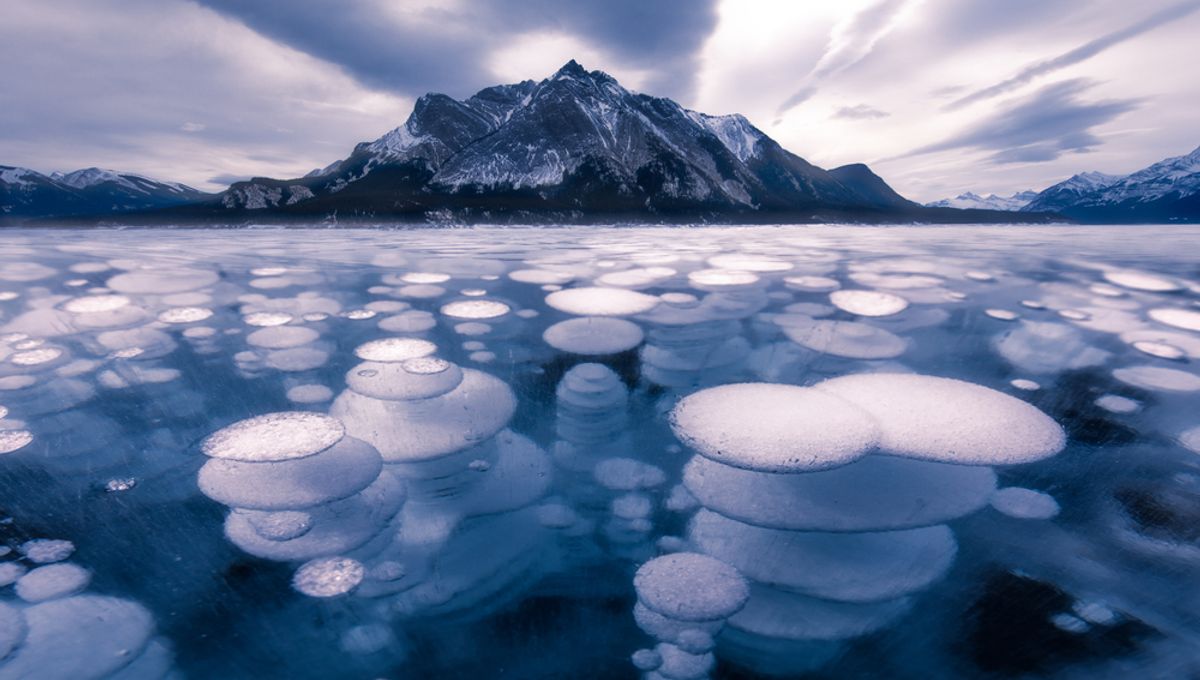
This article first appeared in Issue 6 of our free digital magazine CURIOUS.
If you can brave the freezing temperatures of Abraham Lake in January, you’ll be rewarded with one of nature’s great curiosities as you walk above thousands of frozen bubbles. The diaphanous spheres are beautiful, but they also pack a punch, formed from a highly flammable and potent form of greenhouse gas.
The bubbles of methane form on the bed of the lake where microbes feed on decomposing organic matter, like dead animals and plants, releasing gases. Methane doesn’t like to stay trapped in water, so it forms bubbles that float to the surface. In summer, they are released, contributing to Earth’s methane emissions, but in winter they can get trapped on their way to the surface.
If you’re a smoker, it’s worth noting that hanging around with open flames anywhere there’s methane is a bad idea. There are some cool videos online that demonstrate what can happen when these frozen bubbles release their methane burps in the presence of fire, so leave your lighters at home.
The bubbles eventually go out without much of a bang when the temperature warms in spring and the ice melts. Provided no unsuspecting passersby have chosen the moment of melt to light up a cigar, the gas will seep silently out of the ice and into the atmosphere. Here, they become a bit of a problem.
Abraham Lake isn’t alone in burping out methane during its annual thawing. There are lakes all over the globe doing it, but some of the greatest concentrations of stored methane sit in Arctic ice, which is under threat from the ongoing climate crisis.
So, if you find yourself in Canada at this frosty time of year for the country, take a stroll across nature’s frozen lava lamp. These bubbles are a remarkable quirk of nature, and a reminder that there’s work to be done if we’re to have frozen microbe burps to admire in the future.
The best time to see the frozen bubbles is in January and February. Strolling on ice always comes with its challenges, but there are online guides to help you explore safely.
CURIOUS is a digital magazine from IFLScience featuring interviews, experts, deep dives, fun facts, news, book excerpts, and much more. Issue 8 is OUT NOW.
Source Link: Frozen Bubbles Form In Canada’s Abraham Lake